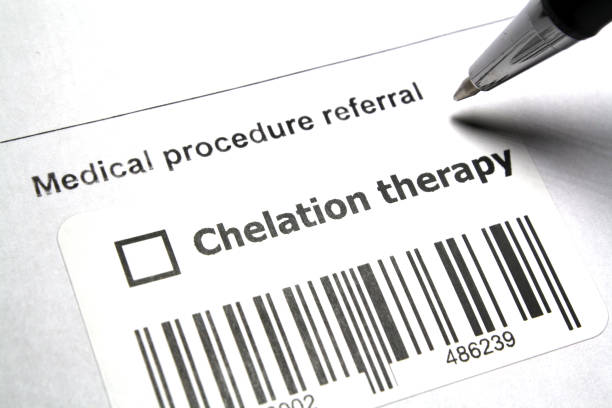A PET scan, short for positron emission tomography, is a specialized imaging technique that offers doctors valuable insights into the functioning of your body. Unlike traditional X-rays, CT scans, or MRIs that primarily provide structural images, a PET scan goes further by revealing how your body is functioning at a metabolic level.
This imaging method involves the administration of a radioactive substance, known as a radiotracer or simply a tracer, by your doctor. The tracer emits radiation that is detected by the PET scan machine. The resulting images illustrate the distribution of the tracer within your body. Areas where the tracer accumulates can indicate abnormalities or diseases, providing essential information for diagnosis and treatment planning.
Furthermore, PET scans provide valuable data regarding blood flow and the utilization of oxygen and sugar by tissues. This information offers critical insights into the progression of diseases and can guide healthcare professionals in making informed decisions about patient care.
In summary, PET scans play a pivotal role in modern medicine, offering comprehensive information about the physiological processes occurring within the body and aiding in the detection and management of various medical conditions.
Uses of positron emission tomography (PET) Scan
A PET scan serves various purposes in medical diagnosis and treatment planning. Primarily, it assists doctors in identifying diseases, evaluating their extent, monitoring treatment efficacy, and assessing the recurrence of conditions. Here are some common uses of PET scans:
- Cancer Detection: PET scans are frequently employed to detect cancerous tumors within the body. By visualizing metabolic activity, PET scans can pinpoint areas of abnormal cell growth, aiding in early diagnosis and treatment planning.
- Staging Cancer: After a cancer diagnosis, PET scans help determine the stage of the disease by assessing whether cancer has spread to other parts of the body, known as metastasis.
- Monitoring Treatment: PET scans play a crucial role in monitoring the effectiveness of cancer treatments, such as chemotherapy or radiation therapy. They enable doctors to assess how well the treatment is targeting the cancerous cells.
- Detecting Cancer Recurrence: Following cancer treatment, PET scans help in monitoring for disease recurrence. By detecting any resurgence of metabolic activity indicative of cancer cells, PET scans aid in early intervention.
In the context of heart disease:
- Assessing Blood Flow: PET scans provide valuable information about blood flow to the heart muscles. This helps cardiologists evaluate cardiac function and detect any abnormalities in circulation.
- Guiding Treatment Decisions: In cases of clogged arteries or coronary artery disease, PET scans assist doctors in determining the most suitable treatment options, such as angioplasty or bypass surgery.
- Assessing Heart Attack Effects: After a heart attack, PET scans help assess the impact on heart muscle function and guide subsequent management strategies.
For brain-related conditions:
- Alzheimer’s Disease and Parkinson’s Disease: PET scans aid in the diagnosis and monitoring of neurodegenerative disorders like Alzheimer’s disease and Parkinson’s disease by detecting changes in brain metabolism and function.
- Seizures: PET scans assist neurologists in identifying the underlying causes of seizures by visualizing abnormal brain activity.
- Stroke and Tumor Detection: PET scans are valuable in evaluating stroke damage and detecting brain tumors by assessing changes in blood flow and metabolism.
In summary, PET scans are versatile imaging tools used across various medical specialties to diagnose diseases, plan treatments, and monitor patient progress effectively.
Positron emission tomography (PET) Scan vs CT Scans and MRI scans
PET scans, CT scans, and MRI scans are all valuable imaging techniques used by doctors for different purposes. Here’s how they differ:
- X-ray: X-rays provide a quick and basic overview of the body’s structures. They are often used as a first-line imaging tool to detect fractures, lung abnormalities, and some organ abnormalities. However, X-rays do not provide detailed information about soft tissues or internal organs.
- CT (Computed Tomography) Scan: CT scans offer detailed cross-sectional images of the body’s internal structures. They are particularly useful for detecting bone injuries, evaluating soft tissue structures like organs and blood vessels, and identifying abnormalities such as tumors or internal bleeding. CT scans use a series of X-ray images taken from different angles to create detailed images.
- MRI (Magnetic Resonance Imaging) Scan: MRI scans use magnetic fields and radio waves to generate detailed images of the body’s internal structures, including soft tissues, organs, and the brain. MRI scans are especially valuable for examining the brain, spinal cord, joints, and soft tissues like muscles and ligaments. They do not involve ionizing radiation, making them safe for repeated use in certain situations.
Now, regarding PET scans:
- PET (Positron Emission Tomography) Scan: PET scans provide information about the metabolic activity of cells in the body. They involve the administration of a radioactive tracer, which emits positrons that are detected by the PET scanner. This allows visualization of cellular processes such as glucose metabolism, oxygen utilization, and blood flow. PET scans are particularly useful for detecting changes at the cellular level, such as in cancerous tumors, before structural changes are visible on other imaging modalities like CT or MRI.
Additionally, hybrid scanners, such as MRI/PET and CT/PET, combine the benefits of both techniques into a single scan. This allows doctors to obtain both anatomical and functional information simultaneously. Hybrid scanners are especially beneficial for precise localization of abnormalities and for comprehensive evaluation in various medical conditions.
Preparing for a positron emission tomography (PET) Scan
Preparing for a PET scan involves a few important steps to ensure the procedure goes smoothly and safely. Here’s what you need to know:
- Inform Your Doctor: Before the scan, inform your doctor about any allergies you have, especially to contrast dye, iodine, or seafood. Also, disclose any health conditions you have, such as diabetes, and any medications, herbs, or supplements you are taking.
- Special Considerations for Women: If you are breastfeeding, pregnant, or think you might be pregnant, discuss this with your doctor. Breastfeeding may require pumping milk beforehand, and precautions are necessary for pregnant women due to potential harm to the baby from the tracer.
- Follow Preparatory Instructions: Your doctor will provide specific instructions for preparing for the scan. This may include avoiding intense physical activity for 24 hours before the scan, fasting for several hours prior to the scan (drinking only water), and removing all piercings, jewelry, and metal objects from your body.
PET Scanning Procedure
The PET scan procedure typically follows these steps:
- Pre-Scan Preparations: Upon arrival, you will change into a hospital gown and visit the bathroom if needed.
- Administration of Tracer: The radioactive tracer will be administered to you, either by swallowing it, inhaling it, or through an injection. You may need to wait for 30 minutes to an hour for your body to absorb the tracer.
- Scan Process: You will lie very still on your back on a table that moves in and out of the PET scan machine, which resembles a large, open circle like a standing donut. It’s crucial not to move or talk during the scan, which can last up to an hour. If you experience anxiety or claustrophobia, your doctor may provide medication to help you relax.
- Scan Experience: The scan itself is painless, but staying still for an extended period might cause some discomfort or aches for some individuals. You will hear buzzing and clicking sounds from the machine as it takes images.
- Post-Scan Care: After the scan, drink plenty of fluids to help flush the tracer out of your body. Your doctor may advise avoiding close contact with pregnant women, children, or babies for a few hours due to the short-term radioactivity. The radioactive material within the tracer will decay within a few hours or days, and you will eliminate it from your body through urine and stool
Side effects and risks of Pet Scan
PET scans are generally safe procedures with minimal risks and side effects. However, some individuals may experience discomfort or encounter specific challenges during the process. Here are some potential risks and side effects associated with PET scans:
- Discomfort or Redness: Some people may experience pain or redness at the injection site where the tracer is administered. This is typically mild and temporary.
- Difficulty Fitting into the Machine: Individuals who are overweight may encounter challenges fitting comfortably into the PET/CT machine due to its size and design.
- Claustrophobia: For those who experience claustrophobia or anxiety in enclosed spaces, undergoing a PET scan may be challenging. In such cases, your healthcare provider may offer strategies to help you feel more comfortable or provide medication to alleviate anxiety.
- Allergic Reactions: Although rare, allergic reactions to the tracer substance used in PET scans can occur. These reactions are typically mild and may manifest as itching, rash, or hives. Severe allergic reactions are extremely rare but can include difficulty breathing or anaphylaxis.
- Inaccurate Test Results for Individuals with Diabetes: People with diabetes may experience inaccurate PET scan results if their blood sugar levels or insulin levels are not within the optimal range during the test. It’s important to follow your doctor’s instructions regarding dietary restrictions and medication management before the scan to ensure accurate results.
- Exposure to Radioactive Material: While PET scans involve the use of a radioactive tracer, the exposure to radioactive material is very low. However, it’s not entirely nonexistent. The amount of radiation exposure during a PET scan is considered safe and unlikely to cause harm to most individuals.
Overall, PET scans are valuable diagnostic tools with minimal risks. Your healthcare provider will take appropriate precautions and monitor you throughout the procedure to ensure your safety and comfort. If you have any concerns or experience unusual symptoms during or after the scan, be sure to communicate with your healthcare team.
Follow-up and results of PET Scan
After undergoing a PET scan, your doctor will analyze the images to assess the metabolic activity in your cells. Bright areas on the scan indicate areas of increased activity, which may be indicative of disease presence. To gain a comprehensive understanding of your condition, your doctor may compare the PET scan results with those of other imaging tests you’ve undergone.
While PET scans provide valuable information, combining them with other imaging modalities, such as CT scans, enhances accuracy. A combined PET/CT scan offers a more detailed and precise depiction of abnormalities, aiding in more accurate diagnosis and treatment planning.
The accuracy of PET scan results is generally high. However, it’s essential to note that the interpretation of the results may vary depending on individual factors and the expertise of the interpreting physician.
You can typically expect to receive your PET scan results within 24 hours. However, the turnaround time may vary depending on the facility where you had the scan performed. Some facilities may provide results sooner, while others may take longer to process and interpret the images.
It’s essential to follow up with your doctor to discuss the findings of the PET scan and any further steps or treatments that may be necessary based on the results. Your doctor will provide you with detailed information and guidance regarding your condition and treatment options.
Sources
- Radiological Society of North America. (n.d.). PET/CT.
- American Academy of Orthopaedic Surgeons: “X-rays, CT scans, and MRIs.”
- RadiologyInfo.org: “Positron Emission Tomography — Computer Tomography (PET/CT).”
- The University of Texas MD Anderson Cancer Center, “Getting a PET Scan? What to Expect.”
- Society of Nuclear Medicine and Molecular Imaging. (n.d.). PET/CT: What is PET/CT?
- Mayo Clinic. (2022). PET scan.

